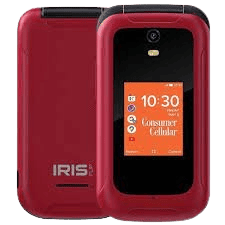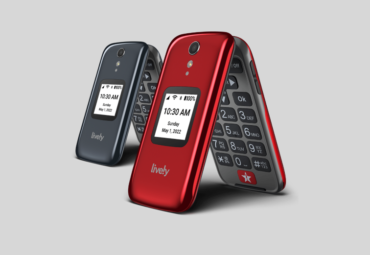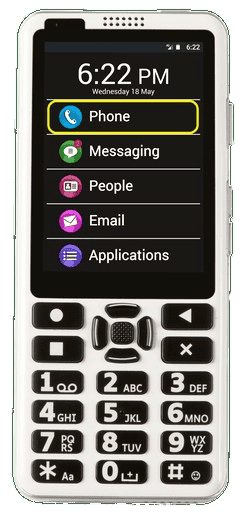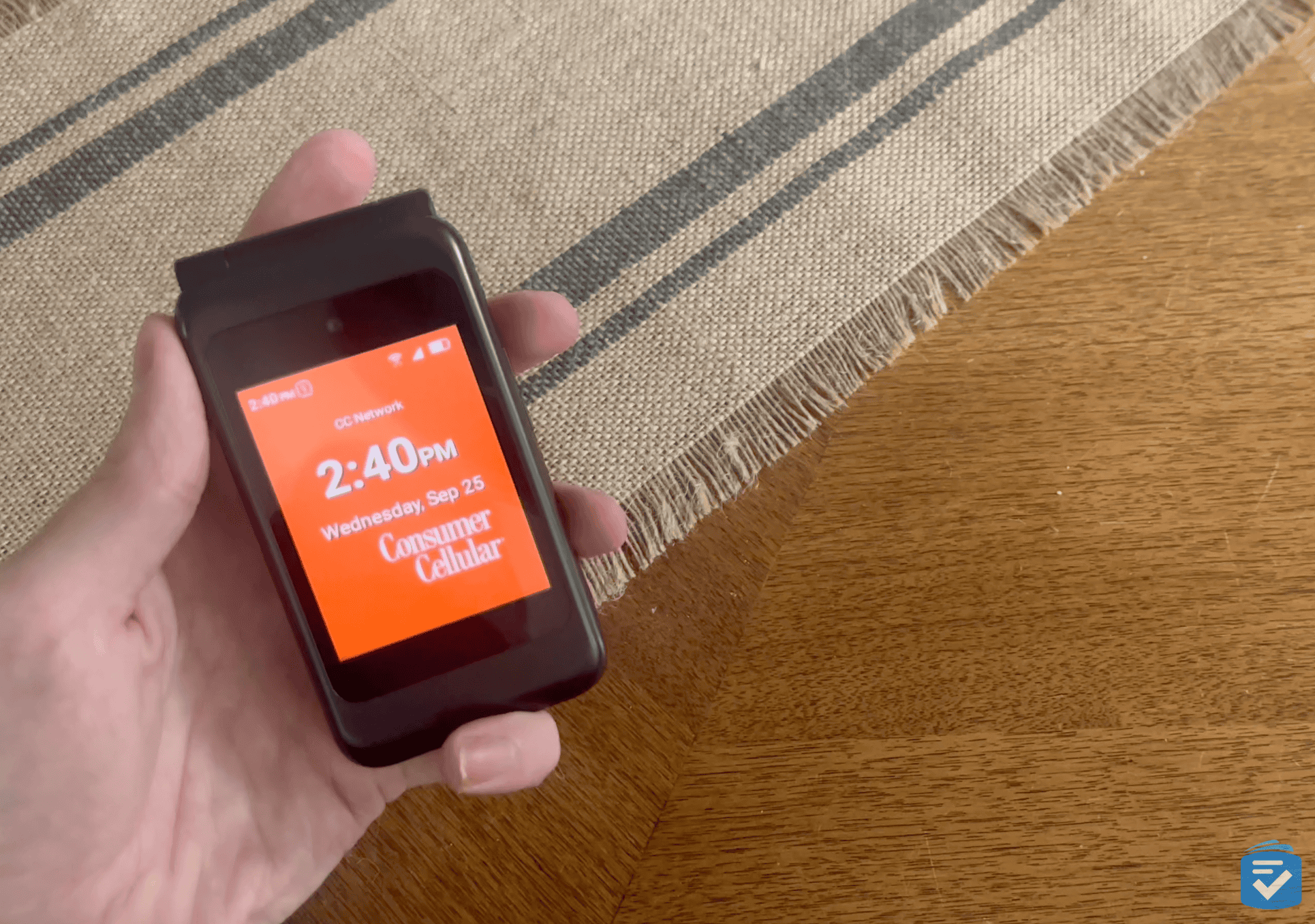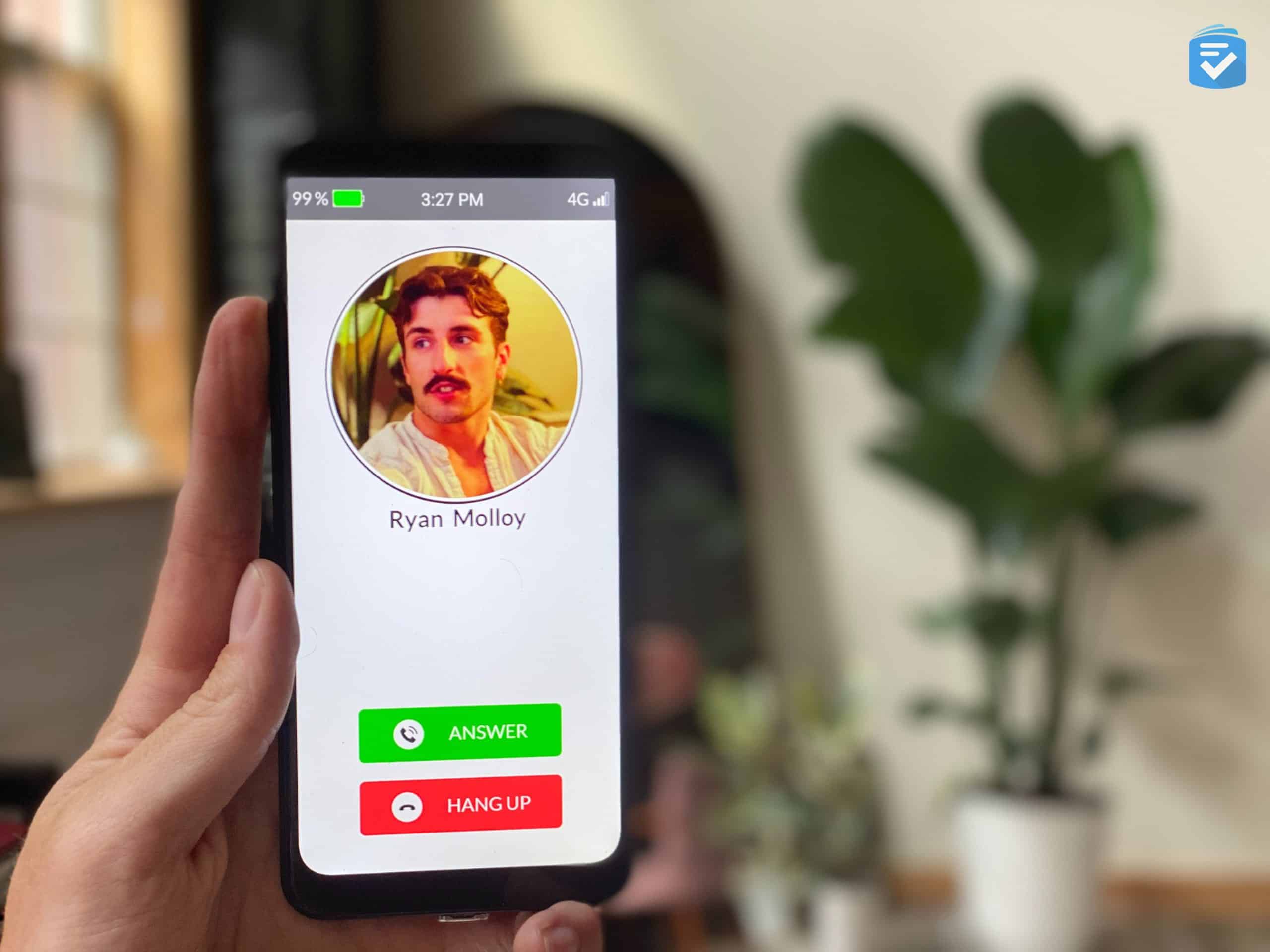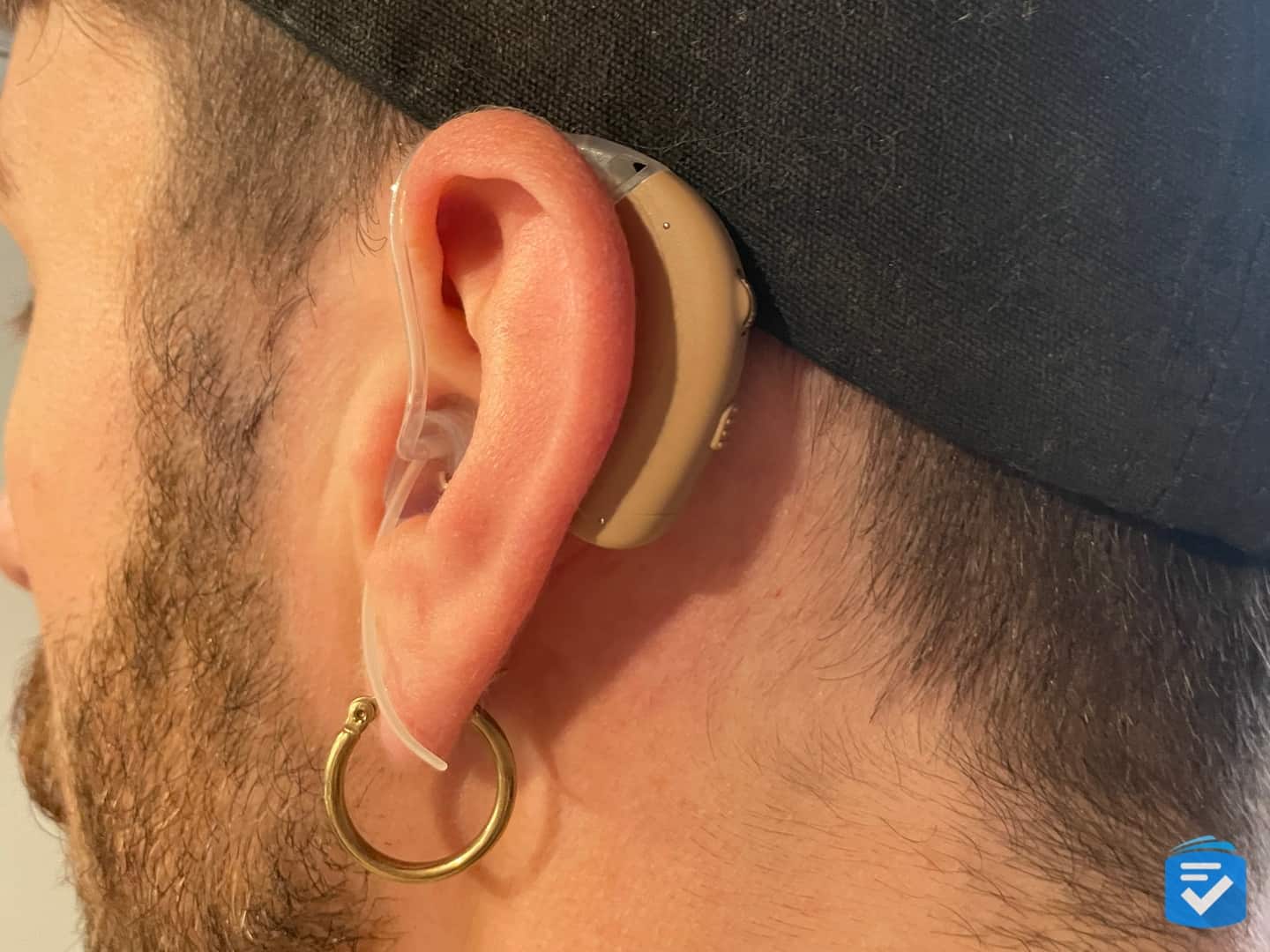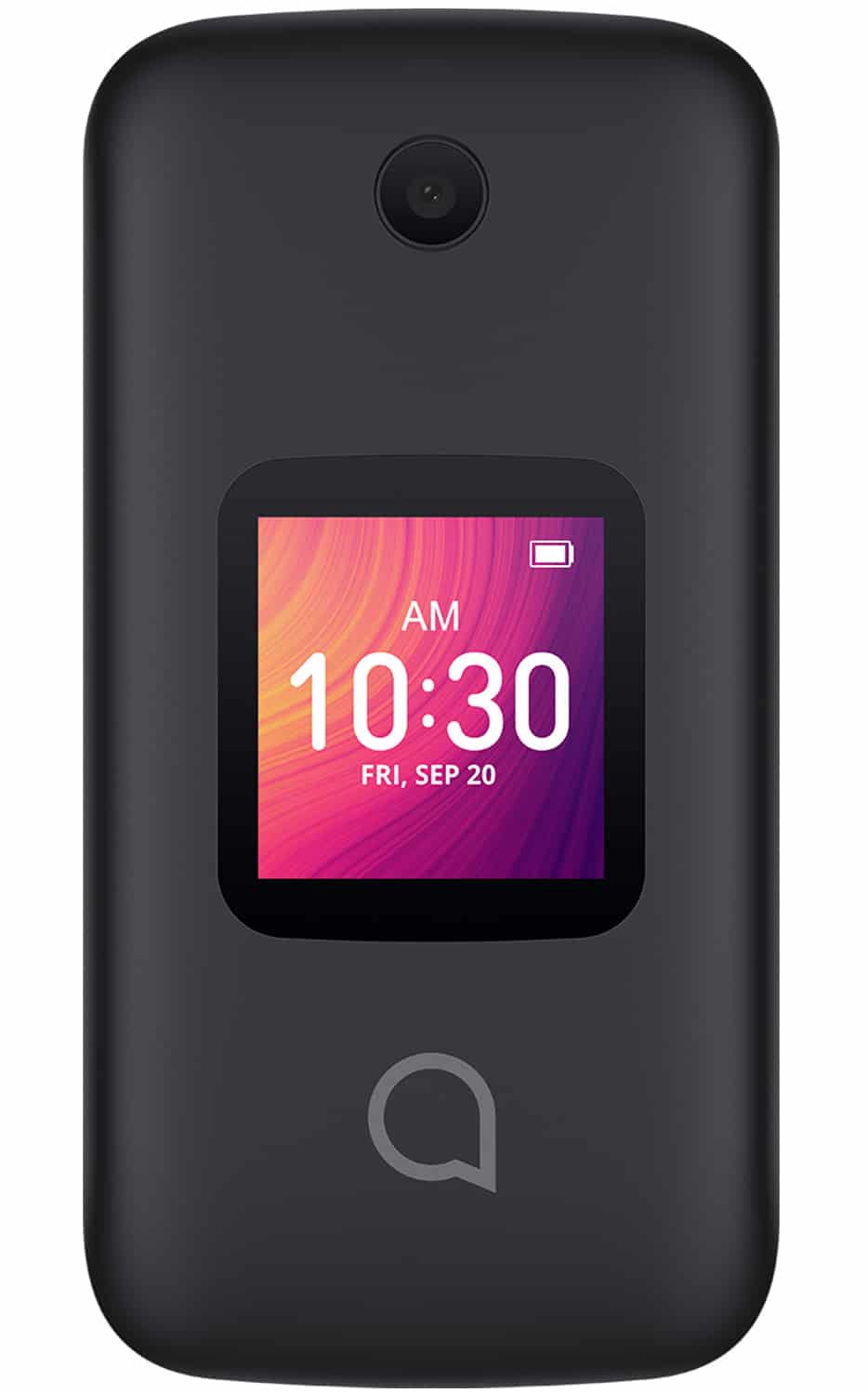The Best Cell Phones for Visually Impaired Users in 2025
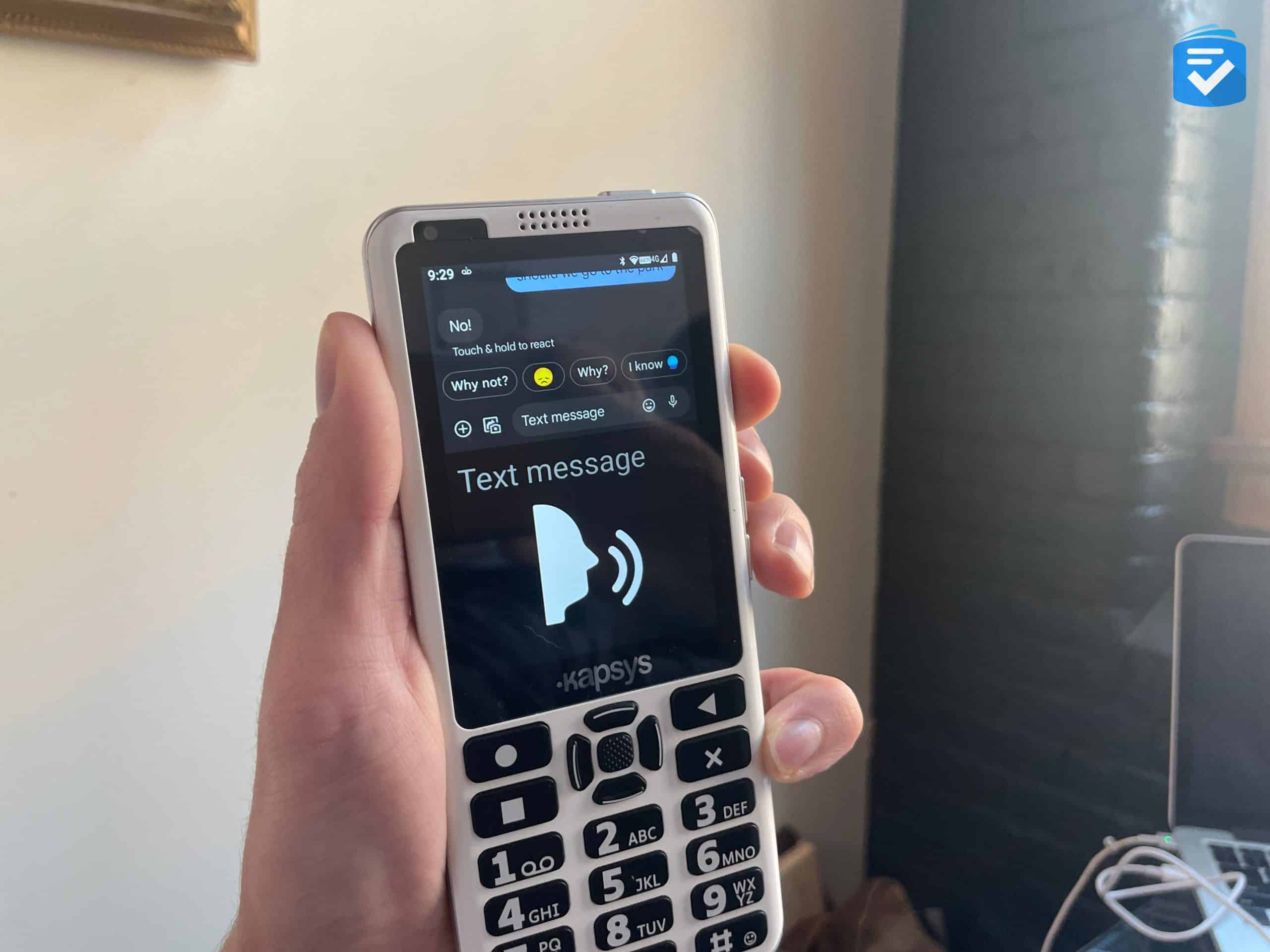
Among U.S. adults ages 71 and older, 28 percent have visual impairment. Ten percent of this group had issues with distance and contrast sensitivity. Unfortunately, the older you get, the more likely you are to live with visual impairment.1 Having a visual impairment makes using a cell phone harder, especially a smartphone without tactile buttons, but they’re a necessity in today’s digital world.
Visual impairments can take many forms, including loss of central and peripheral vision, blurriness, a generalized haze, and nighttime blindness, among others.2 In this rundown of the best phones for visual impairment, I’ll discuss both flip phones and smartphones, some of which have been created specifically for people with impaired vision.
We tested out all of the phones on this list, rating them for their accessibility, ease of use, features and price.
Pro Tip: The best cell phone is useless without an equally reliable network. To find discounted unlimited plans for seniors, read our rundown of the best senior phone plans.
Best Cell Phones for the Visually Impaired in 2025
- Consumer Cellular IRIS Easy Flip : Most Affordable
- Jitterbug Flip2 : Best Medical Alert Features
- RAZ SmartVision 3 : Best Apps
- Jitterbug Smart4 : Largest Screen
- RAZ Memory Cell Phone : Best for Dementia
- RealSAM Pocket : Best Features
Phones for Visual Impairments Compared
| Phone | Device cost | Screen size (in inches) | Standout feature |
|---|---|---|---|
| Iris Easy Flip | $59 | 2.8 | Backlit keypad |
| Jitterbug Flip2 | $79.99 | 3.2 | Large tactile buttons |
| RAZ SmartVision 3 | $599 | 3.5 | Built-in features for visual impairment |
| Jitterbug Smart4 | $119.99 | 6.75 | Emergency safety features |
| RAZ Memory Cell Phone | $349 | 6.5 | Ultra-simplified interface |
| RealSAM Pocket | $1,399 | 6.4 | Remote connections to sighted volunteers |
Best Cell Phones for the Visually Impaired
1. Consumer Cellular IRIS Easy Flip - Most Affordable

844-580-0512
What We Like Most:
- Flip phone with smartphone apps
- $59 price tag
- Backlit keyboard
- Built-in flashlight
Overview
Price: $59 when purchased from Consumer Cellular
If budget is a huge concern of yours, let me introduce you to the Iris Easy Flip, sold for only $59 by Consumer Cellular. It has the benefits of being a flip phone with a tactile keyboard. Plus, it’s hearing aid compatible for those with both vision and hearing loss.
Performance
The Iris Easy Flip was as easy to use as the Jitterbug Flip2, being a flip phone. I had no issues making calls or sending texts on the internal screen. However, given that the screen is only 2.8 inches, this may not be so useful to someone with vision loss.
Now let’s talk about that tactile keyboard, an especially useful feature for someone with visual impairments. I liked the rubbery texture, which helped engage other senses in addition to vision. The keypad was backlit with big letters, which made texting a breeze.
Another useful feature was the ability to speed-dial my “favorites.” With the push of a single button, I could stay in contact with the most important people in my life — the primary purpose of having a cell phone in the first place.
Plans
All of Consumer Cellular’s plans include unlimited talk and text, cellular data, 5G access, and a mobile hot spot. The only difference among the plans is the amount of data you get each month: 1, 5, 10 or unlimited GBs, with a price range of $20 to $50 a month, pretty similar to Lively’s range.
You can get 5 percent off per month with an AARP membership, however, bringing costs down to between $19 and $47.50 per month. AT&T provides the network, and it’s the only option. About $50 a month is standard for unlimited data plans across major networks such as AT&T and Verizon.
>> Read more: Consumer Cellular Review
Drawbacks
While the $59 price tag is nice (and the lowest price on this list), it also means I got less in terms of features, which is the case for any flip phone. For instance, the phone lacks a virtual assistant like the RAZ SmartVision 3’s Google Assistant, so I wasn’t able to control the phone using my voice alone.
Bottom Line
Similar to the Jitterbug Flip2, the Iris Easy Flip is limited in terms of capabilities, although it has an operating system like that of a smartphone. I recommend this phone to a budget-conscious person who wants to use their phone primarily to talk and text.
To learn more about this phone, read our full Iris Easy Flip review.
Pros
- $59, the cheapest phone on this list
- High resolution inside screen
- Compatible with hearing aids M3/T3
Cons
- Screen is only 2.8 inches
- No virtual assistant
2. Jitterbug Flip2 - Best Medical Alert Features

855-403-6340
What We Like Most:
- Easy-to-use flip phone
- Front-facing speakerphone
- Speed dial
- Urgent response button
Overview
Price: $79.99 when purchased through Lively
The Jitterbug Flip2 is an affordable flip phone with tactile buttons that will make it much easier for a visually impaired person to make calls and send texts. Plus, since the Flip2 is from Lively, you can sign up for additional safety features, such as an urgent-response button, which ensures that emergency services, friends and family are contacted if need be.
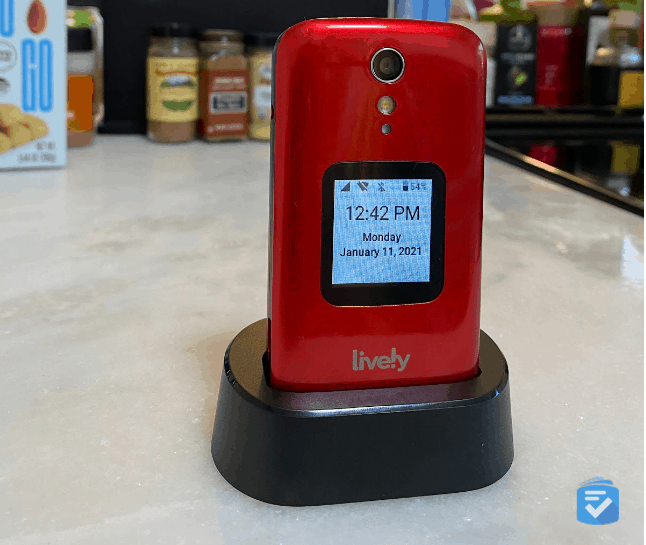
Performance
Remember when phones had buttons you could touch with your fingers? That’s still the case for the Jitterbug Flip2, an old-fashioned flip phone from Lively. Sometimes less is more, and I had no issue sending texts or making calls with the tactile keyboard.
Another feature someone with visual impairments may appreciate is that the phone comes with Alexa, Amazon’s virtual assistant. I was surprised to find a flip phone with Alexa, so I used it to send texts and make calls, which made up for the phone’s smaller screen.
The setup of the screen was very simple and easy for someone with visual impairments to navigate. When I opened the phone using the backlit keyboard, I saw a screen with a menu in the form of a list. It clearly listed “phone, text messages, contacts, Amazon Alexa, photos and videos.” Having to deal with the tiny icons of an iPhone, for example, is a lot more confusing than having clear black words on a bright white background. All in all, I thought this phone was easy to use.
Plans
With the Jitterbug Flip2, plans cost $14.99 to $49.99 per month (or $5 per month less if you participate in paperless billing). All plans include 300 minutes of talk and 300 texts per month, plus the ability to request a Lyft over the phone or ask a team member for directions, which is ideal for people with vision impairment.
The midtier $34.99 option adds an urgent-response team, and the phone can alert your friends and family if there’s an emergency. Finally, with the top-tier $44.99-per-month plan, you’ll have a nurse and doctor on call for medical advice over the phone, in addition to what the company calls a “care advocate,” someone who can help you meet your health goals.
For an additional $5 a month, you can get unlimited talk and text with any plan.
>> Read more: Lively Phone Plans for Seniors
Drawbacks
Being a flip phone, the Flip2 lacks video chatting among several other smartphone features. Additionally, the charger is a regular USB port, which may be hard for some people to see. Compare that to the RAZ SmartVision 3, which has a wireless charging option, and you’ll understand why the Fiip2 costs only $79.99 and not $500 plus.
Bottom Line
If you want a simple flip phone for only $79.99, the Jitterbug Flip2 is certainly the most straightforward option. However, it doesn’t include all of the bells and whistles of a smartphone like the RAZ SmartVision 3. Of course, the latter also has a much higher price tag, which is a significant consideration.
To learn more about our experience with this phone, read our full Jitterbug Flip2 review.
Pros
- $79.99 price tag
- Large buttons
- Front-facing speakerphone
- Speed dial
Cons
- Screen is only 3.2 inches
- No speech-to-text feature
3. RAZ SmartVision 3 - Best Apps
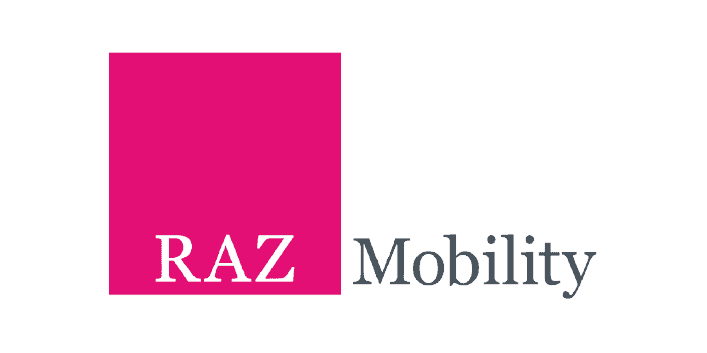
What We Like Most:
- Text magnifier
- Google Assistant voice commands
- Built-in apps for people with visual impairments
- Tactile keyboard

Overview
Price: $599
If you want the best and most helpful features for a visually-impaired person and have more flexibility on price, consider the RAZ SmartVision 3. It’s the only phone on this list that’s a smartphone with tactile buttons — an almost unheard of combination ideal for someone with vision issues. Plus, because it has Google Assistant, I could control it with my voice completely, enlarge text, make calls, send texts and more.
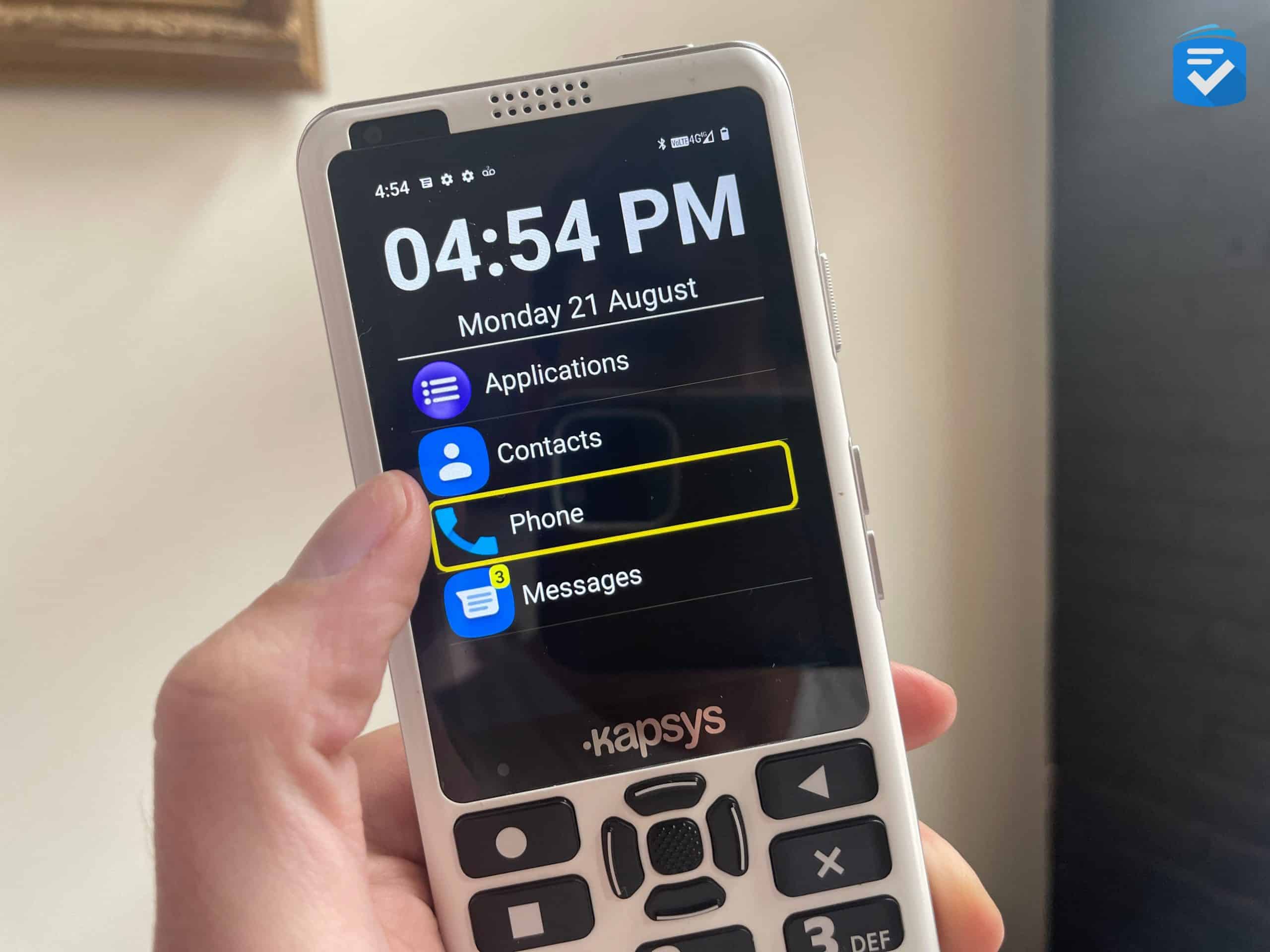
Performance
When I opened the RAZ SmartVision 3, I saw a black screen with white text stating, “Phone, messages, people, email and applications.” Having the white text on a black background is certainly not the norm for cell phones, but this phone was designed specifically for people with visual impairments.
Making things even easier were the voice commands. All I had to do was push one button on the side of the phone, and I could have Google Assistant do my work for me: make calls, send texts and even open applications.
Of course, sometimes I want to read an email or even a book, and for that I used text magnification, which allowed me to customize the size, color and position of the text in a scrolling banner. I also appreciated the fact that this was the only smartphone I’ve come across with a tactile keyboard. The joystick in the middle made it easy to get back to the home screen when I didn’t feel like bossing around Google Assistant.
Plans
With the RAZ SmartVision 3, I had the following networks to choose from:
- Affinity Cellular
- Metro by T-Mobile
- Simple Mobile
- T-Mobile
- Ultra Mobile
I’ll refrain from covering all five options, but I recommend T-Mobile. If you’re over 55, one line costs $45 per month and two lines cost $30 per line per month. The good thing about RAZ Mobility is that they don’t make you pay any subscription fees in addition to data, unlike Lively’s Jitterbug Smart4 and Flip2.
>> Read more: T-Mobile Senior Plan Review
Drawbacks
With a $599 price tag (at minimum), the RAZ SmartVision 3 is the second-most expensive phone on this list after the RealSAM Pocket, a phone also created specifically for those with visual impairments. Additionally, I wish the screen was bigger, as it’s only 3.5 inches — compare that to the Jitterbug Smart4, which is 6.75 inches. However, the text magnification made this less of a problem.
Bottom Line
The RAZ SmartVision 3 has some of the most robust features for visually impaired people on the market right now. Its built-in apps like the book reader and banknote recognizer will help you navigate the real world, not just make calls and texts. If you can afford the $599 price tag, I recommend this phone.
To learn more about this phone, read our full RAZ SmartVision 3 review.
Pros
- Speech read out loud through Google Assistant
- Text magnification
- Vision-friendly notes
- Google Assistant
Cons
- 3.5-inch screen
- $599 price
4. Jitterbug Smart4 - Largest Screen

855-403-6340
What We Like Most:
- 6.75-inch screen
- Speakerphone
- Hearing aid compatible
- Friends and family can be alerted if there’s an emergency
Overview
Price: $119.99 when purchased through Lively
Whether you’re using your phone to call, text, stream or read articles, a big screen is incredibly useful for someone with a visual impairment. The Jitterbug Smart4 offers the largest screen of any phone on this list, at 6.75 inches. Plus, you’ll get all the medical and safety features of the Flip2, like an emergency response button.
>> Read more: Jitterbug Phone Reviews
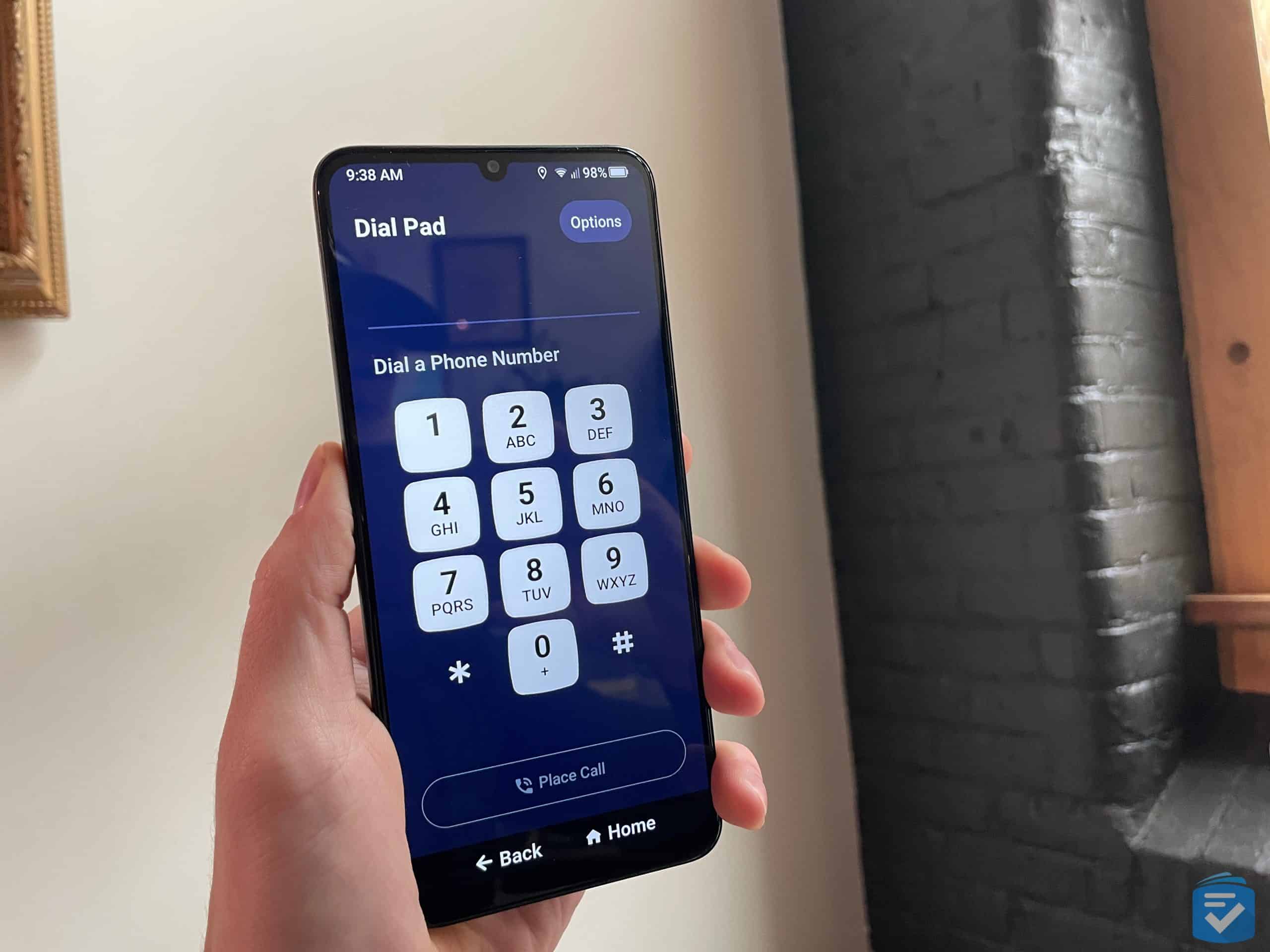
Performance
I spend a lot of time on my phone, whether it’s scrolling through Instagram, reading X (formerly known as Twitter), or watching videos on YouTube. If that sounds like you, you’ll appreciate the Jitterbug Smart4 for its 6.75-inch screen, the largest on this list. The home screen was clearly listed, with icons, buttons for the phone, text messages, camera, web browser, email and navigation. At the top was an urgent response button in red, which makes it eye-catching. If I had clicked on it, I would’ve been connected with an agent from Lively who would help me out and alert my friends and family.
Another feature I appreciated about the Smart4 is the voice typing feature. Because the phone lacks a tactile keyboard, typing might be a little hard for someone with visual impairments. But the voice-to-text feature allowed me to bypass using the keyboard.
Plans
With the Jitterbug Smart4, I used the Verizon network, the only one it works with. The price range was from $19.99 to $79.99 per month depending on how much data I got — either 1GB, 5GB or unlimited — and what features I wanted.
The benefit of Lively is that you have the option to get safety features. For example, the Basic plan, the most affordable, allowed me to call Lively to have them send a Lyft for me, which could be really useful for someone with visual problems who has trouble with ride-share apps. Upper-tier plans also offer a nurse you can call at any time, as well as an urgent response button to get connected to emergency services.
Drawbacks
While the Jitterbug Smart4 has great safety and medical features, it lacks some of the vision-specific features I used with phones like the RealSAM Pocket, such as vision magnification and a virtual assistant. Of course, with such a large screen, text magnification is less necessary.
Bottom Line
I’d recommend the Jitterbug Smart4 if having a large screen is most important to you. This may be useful for visually impaired people who want to use their phones to read articles or stream movies or TV shows. Plus, at $119.99, it’s pretty affordable for a smartphone, considering that the RAZ SmartVision 3 costs $599.
To learn more about this phone, read our full Jitterbug Smart4 review.
Pros
- 6.75-inch screen, the largest on this list
- Compatible with M3/T4 hearing aids
- Urgent response button
- Get Lyft rides scheduled over the phone
Cons
- No voice commands
- No tactile buttons
5. RAZ Memory Cell Phone - Best for Dementia

What We Like Most:
- Simple phone screen
- 6.5-inch screen
- All calls placed on speaker automatically
- Alerts up to three people automatically if you call 911

Overview
Price: $349 when purchased from Raz
Although the RAZ Memory Cell Phone was designed for someone with dementia, many of its features would benefit someone with visual impairments, as well. The home screen, for instance, is six pictures of contacts with names, making it easy for someone with low vision to call their closest friends and family. The simplicity of the phone, which has only calling and emergency service, makes it easy for someone with low vision to use.
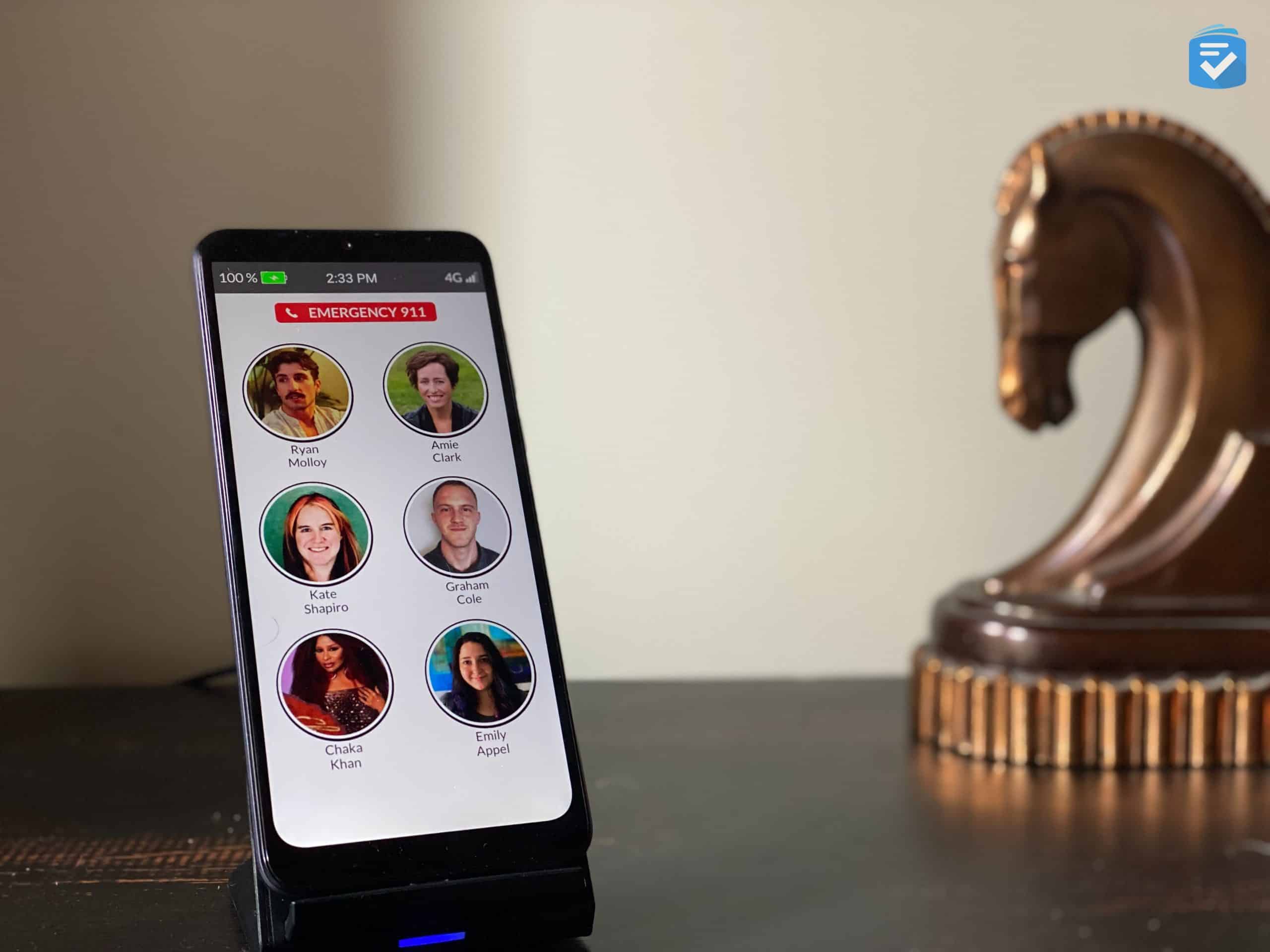
Performance
The thing that struck me the most about the RAZ Memory Cell Phone was how simple it was — which makes sense, as it was designed for someone with dementia. When I opened the phone, I saw black background with white text, similar to the SmartVision 3. The phone allowed me to choose six contacts who I communicate with the most to appear on the home screen, both their name and photo. This simple design made it really easy to make calls, one of the phone’s only capabilities.
But the thing I loved the most about the RAZ Memory Cell Phone was the low vision mode. This made those contact pictures even larger and let me choose from a wide range of colors. In this mode, I only had two contacts instead of six, simplifying the home screen even more. And with a bright red “hang up” button and a bright green “answer” button, this phone is incredibly helpful for someone with low vision.
Plans
I could choose from the following networks with the RAZ Memory Cell Phone:
- Affinity Cellular
- AT&T
- Consumer Cellular
- Cricket Wireless
- Google Fi
- Metro by T-Mobile
- Mint Mobile
- Red Pocket Mobile
- Simple Mobile
- Straight Talk
- T-Mobile
- TracFone
- US Cellular
- Verizon
You should be able to get unlimited data for around $50 per month, or less if you have multiple lines for each. Mint Mobile has extremely low prices (only $15 a month for those 55 and up if you sign up for three months), but you’ll only get 5GB of 5G/4G LTE data per month. This could be a good option for someone who doesn’t use their phone much.
Drawbacks
Being a typical smartphone, the RAZ Memory Cell Phone lacks physical buttons, unlike the RAZ SmartVision 3. It also doesn’t have a virtual assistant, so I couldn’t command it using my voice. If you want a virtual assistant, choose the RAZ SmartVision 3, which has Google Assistant.
Bottom Line
Like the Jitterbug Flip2 and Smart4, the Raz Memory Cell Phone’s emergency services will give you the peace of mind that if anything happens, the owner of the phone will be connected to help. This is an ideal phone for someone who only wants a phone for calling and safety reasons.
To learn more about this phone, read our RAZ Memory Cell Phone review.
Pros
- Simple home screen
- All calls placed on speaker automatically
- 6.5-inch screen
- Urgent response button
Cons
- No voice assistant
- No speech-to-text
6. RealSAM Pocket - Best Features

What We Like Most:
- Text magnifier
- Will read text out loud for you if you take a picture
- Can describe your surroundings for you if you take a picture
- Voice commands

Overview
Price: $1,399 when purchased from RealSAM
The RealSAM Pocket is the cream of the crop when it comes to features for visually-impaired people. With voice commands and the ability to read handwritten text out loud, it will help you navigate the real world, not just make calls or texts. If you can afford the $1,399 price tag, this is the most helpful option for those with visual impairments.
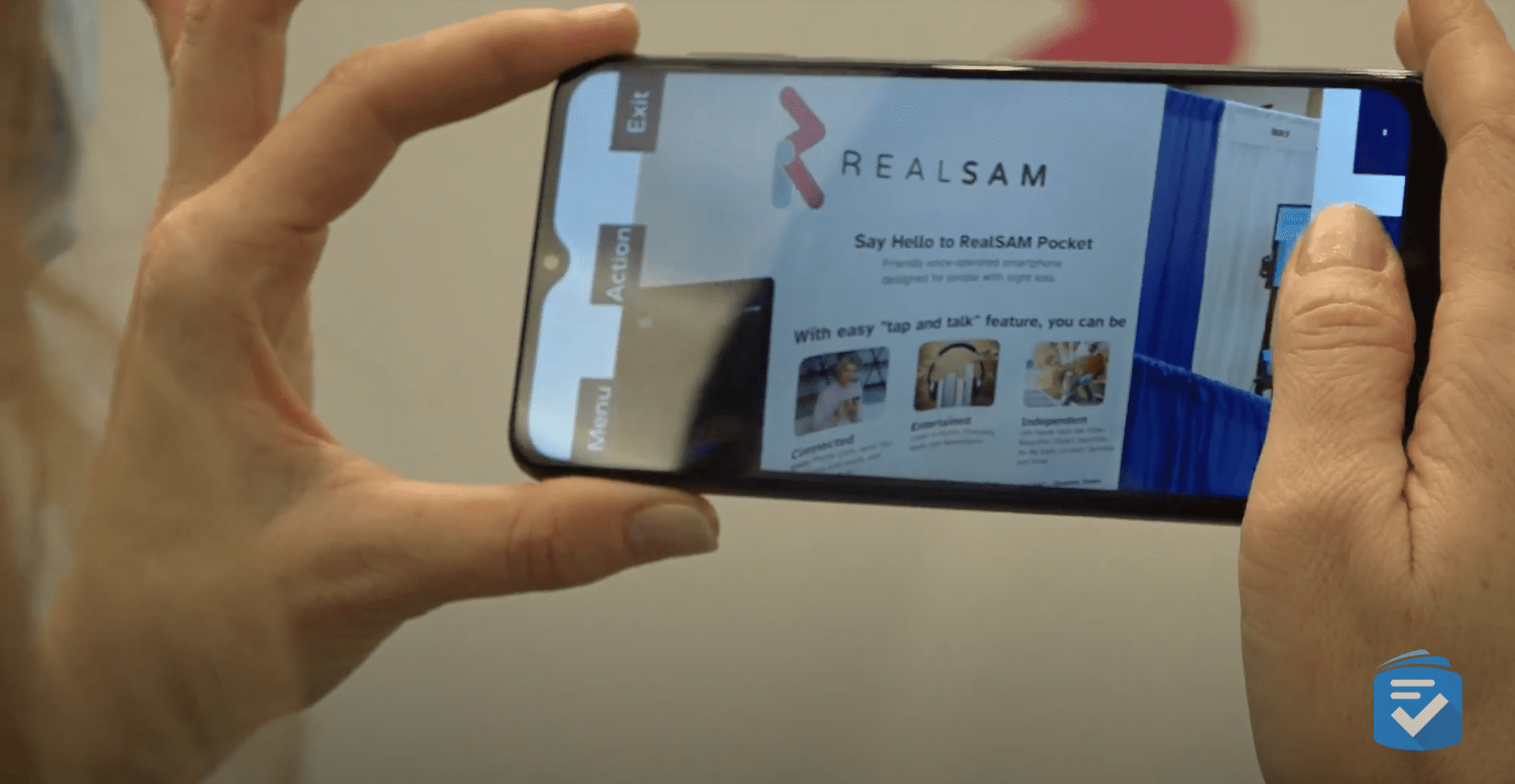
Performance
The RealSAM Pocket doesn’t have a physical keyboard, which you may see as a negative for someone with visual impairments. However, because I could control the phone using my voice, this didn’t matter to me. All I had to do was tap on the screen to tell my virtual assistant what to do. I had this digital creature call friends and family, tell me where I was, and send texts.
But what I was most impressed by was how much the RealSAM Pocket helped me navigate the real world. For example, I wrote out a grocery list and then took a picture of it, and had the phone read it out loud to me. It worked well, even on my less-than-stellar handwriting.
Not only can it read text out loud, but it can also describe objects or environments within a picture. To test it out, I took a picture of my living room, and it said out loud “fireplace, armchair, coffee table.”
Plans
The RealSAM Pocket works with any mobile carrier in the U.S., so you have your pick over the entire market. If you already have a cell phone and like your network, you can stick with the same network.
Much like the RAZ Memory Cell Phone and SmartVision 3, I didn’t have to pay for any additional subscriptions with the RealSAM Pocket.
Drawbacks
With a price tag of $1,399, the RealSAM Pocket is the most expensive phone on this list. However, what you’re really paying for is the phone’s features built specifically for those with visual impairments.
Bottom Line
Although the RealSAM Pocket is priced at nearly $1,400, it’s a fantastic option if money is no object. I was most impressed with how it helps people in the real world, reading handwritten text or describing your environment from a picture. One way to justify the price is the fact that I could pair the phone with a plan from any U.S. mobile carrier, so I could choose a lower-cost monthly plan.
Pros
- Handwritten texts read out loud
- Pictures described
- Voice commands
- Navigation
Cons
- $1,399 price tag
- No SIM card included
Understanding Visual Impairments and Phone Needs
Visual impairments come in many categories.
Cataracts
If you have cataracts, it means the natural lens in your eye has become cloudy, causing your vision to blur or look hazy.3
Nearsightedness
Nearsightedness means you can’t see things from far away.
Glaucoma
When fluids build up in the front part of the eye, it increases pressure and damages the optic nerve, causing blindness.
Low Vision
If you have low vision, it means your vision loss can’t be improved via eyeglasses, medicine or surgery. Low vision can appear as loss of your central or peripheral vision, blurry vision, or night blindness.4
Age-Related Macular Degeneration (AMD)
AMD occurs when a part of your retina, the macula, is damaged, resulting in loss of central vision.
Farsightedness
Farsightedness means you have trouble seeing objects near you, which may make activities such as reading difficult.
As far as phone use goes, problems with vision could result in difficulty reading texts, seeing screens through glares or perceiving colors. Fortunately, many companies manufacture phones specifically for people with visual impairments, with helpful features like text magnification and voice control.
Types of Phones for Different Needs
Even within the field of visual impairments, cell phones aren’t one-size-fits-all. The biggest divide is between smartphones and flip phones.
Smartphones have many advantages for visually impaired users, such as access to a wider range of apps that can help you navigate the world, to more customization options. Features like Apple’s VoiceOver and Samsung’s TalkBack can make text larger and have text read out loud. However, because they have complex menus, smartphones can be hard to use for visually impaired people, especially if they lack tactile keyboards.
Basic flip phones have fewer capabilities than smartphones, but their simplified interfaces, physical buttons and long battery lives may make them easier to use for some people with visual impairments. You’ll have limited apps to use, however, and no advanced features such as text-to-speech.
If you can afford them, I recommend specialized phones designed for people with visual impairments, like the RealSAM Pocket. They have higher prices, but they also have unique features to help you navigate your phone, such as tactile keyboards, voice control and audio descriptions of text.
Key Features to Consider for Accessibility
Shopping for a phone that works for people with visual impairments? Here are some key features to look out for:
Display
The larger the screen, the better. But you also want to make sure the screen is not pixilated and is bright enough for someone with low vision to see. I recommend phones with high-contrast displays, text-size adjustment and zoom options.
Audio
Audio is a great workaround for people with vision problems. Look for phones with loudspeakers, headphone jacks, high-quality audio, text-to-speech and voice control.
Physical Buttons
Physical buttons can be a huge help to people with low vision, allowing them to navigate using touch. I also appreciate phones with dedicated buttons for frequently used functions, such as an emergency SOS button or volume control.
Operating System
iPhones use the iOS operating system, while Androids use the Android operating system. Both, however, have tools for people with visual impairments.
Apple’s VoiceOver features turn text into audio, magnify text and reduce on-screen movement. Android offers similar accessibility features, using AI to describe images or make your font bigger.
Phones with their own operating systems, such as the RealSAM Pocket, are the most accessible, since they’re designed specifically for people with visual impairments.
Battery Life
Using accessibility features like VoiceOver requires more battery. If you talk and text on your phone a lot, consider battery life when you’re shopping for a phone. The Jitterbug Smart4 has talk time of up to 37 hours, for example, while the Jitterbug Flip2 has a 12-hour maximum.
Price and Carriers
Phones for people with visual impairments can vary greatly in price, from $59 all the way up to $1,399. The more you pay, the more features you can get that will help someone with visual impairments.
Also take into account carrier compatibility and the monthly cost of data, which typically is around $50. Networks such as Mint Mobile, T-Mobile and AT&T have discounts for older adults.
Bottom Line
Visual impairment affects more than one in four U.S. adults over the age of 71. But having a visual impairment doesn’t mean phones are out of reach. There are phones on the market that can meet your individual needs, whether you have cataracts, glaucoma, macular degeneration or low vision.
I recommend trying phones before you make a decision. Many companies offer flexible return policies and money-back guarantees, so there’s no financial risk. Still, be sure to do your research before you buy.
If you want more support for your visual impairment in general, check out this list of resources5 from the American Council of the Blind, which provides a list of organizations that can educate you and connect you to products and services.
Our Methodology
Here are a few key traits we looked for when choosing the best phones for people with visual impairments.
Screen Size and Resolution
The larger the screen, the easier it is to see. We looked for smartphones with screens of around 6 inches and flip phones with screens of around 3 inches. The number of pixels, also known as resolution, matters for the clarity of the screen.
Voice Commands
Ideally, the phones would allow us to control them via voice commands so we could bypass physical controls altogether.
Simplicity
Sometimes less is more. Someone with visual impairments doesn’t need a bunch of visual noise clogging up their phone.
Large Buttons
Large buttons are a plus, as are tactical buttons on smartphones and flip phones. Buttons should also be backlit for added visibility.
Affordability
The phones on this list have a wide range of prices, from $59 all the way up to $1,399. Phones designed specifically for people with visual impairments tend to cost more, but their features are worthwhile.
Frequently Asked Questions
-
Which cell phone is best for the visually impaired?
The best cell phone for the visually impaired is the Jitterbug Flip2. It has large, tactile buttons in addition to featuring a front-facing speakerphone and speed dialing. With some plans, the phone offers an urgent-response button, allowing easy connection to emergency services.
-
Is there a cell phone for the blind?
Yes, there are multiple cell phones designed specifically for the blind like the RAZ SmartVision 3 and the RealSAM Pocket. However, blind people can use regular phones like the iPhone SE, as Apple offers VoiceOver, which can describe what is occurring on screen, even using Braille, by connecting to your Braille display.
-
Are iPhones good for people with visual impairments?
Yes, iPhones are good for people with visual impairments because of Apple’s accessibility feature, VoiceOver. With VoiceOver, you can have auditory descriptions of what’s happening on a screen, and you can also magnify text, hear text spoken out loud, zoom in on text and more.
-
Which is the easiest cell phone for seniors to use?
The easiest cell phone for seniors to use is a flip phone, which most closely resembles a landline. I recommend either the Jitterbug Flip2 from Lively, which works through the Verizon network and costs $79.99, or the Iris Easy Flip from Consumer Cellular, which works on the AT&T network and costs $59.
Both phones are compatible with hearing aids, although only the Flip2 has Alexa, Amazon’s voice assistant, which allows you to control the phone using your voice alone.
-
Which carrier has the best cell phone deals for seniors?
Mint Mobile offers the best cell phone deals for seniors. Adults ages 55 and up can get 5G coverage for $15 per month if they sign up for three months. Plus, the company will help you add your current phone to the Mint Mobile network, cancel your old plan and transfer your existing number to Mint Mobile.
The only other company that offers a lower monthly price ($10 a month) is FreedomPop, but you’ll get only 1GB of 5G data per month, which won’t be sufficient for most people.


